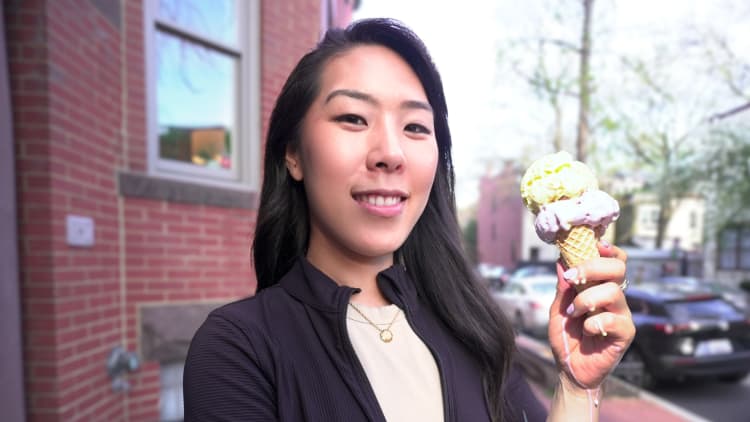
Going to an Ivy League school like Harvard University pays off in the long run.
Former Harvard students who received federal aid earned a median salary of $95,114 ten years after starting college, according to Harvard data Ministry of Education College Scorecard. That’s well above the average salary of $50,806 for former students and federal aid recipients at all four-year institutions.
Before getting there, however, Harvard students pay a high price.Tuition for the 2024-25 school year is $56,550, according to the Department of Education School website. Additional costs such as room, board, and student services bring the total cost of attendance to $82,866.
However, many students pay far less than the listed price. Here’s how much students actually pay for a Harvard education.
Nearly a quarter of Harvard families pay nothing
While the Ivy League schools have a reputation for While producing high-income earners, they also tend to provide generous financial assistance to families in need.
More than half (55%) of Harvard undergraduates receive institutional scholarships, According to the school24% of Harvard families pay nothing when receiving aid and grants.
Harvard University maintains a 100% need-based aid policy, meaning it is committed to providing all financial aid families need. Harvard says families making less than $85,000 a year are not required to contribute any money toward the cost of a student’s attendance.
But not all financial aid comes directly from the school. According to the school’s website, approximately 19% of undergraduate students receive federal Pell Grants. According to the College Scorecard, students receiving federal financial aid pay an average of $19,500 per year to attend Harvard.
Low-income families make up only a small portion of Harvard’s population
Although Harvard bills itself as a relatively affordable option for those who are admitted, the school’s admissions data shows that it can be very difficult for low-income students to get in.
Harvard says its admissions process is “need-blind,” meaning a student’s ability to pay tuition has no impact on their admissions prospects. However, many factors make it difficult for students from low-income families to gain the competitive edge they need to get into elite schools like Harvard University.
Competitive colleges want to see applicants demonstrate academic excellence Participation in extracurricular activities. History has shown that wealth and high family income can help students achieve both of these goals, while lower-income students may not have the time or financial support to do so.
Even if students from different economic backgrounds have similar academic performance, being richer can be an advantage.
A A 2023 study from Harvard’s own Opportunity Insights The study found that students from the top 1% of families were twice as likely to attend an Ivy League or “Ivy+” school as middle-class students with similar SAT scores, including Stanford University, MIT, DU University of Chicago and the University of Chicago.
Among Harvard’s class of 2013, only 4.5% were from the bottom 20% of income earners, while 67% were from the top 20%. Latest data from Opportunity Insights.
Want to make some extra money outside of your day job? Sign up for CNBC’s new online course How to make passive income online Learn about common passive income streams, tips for getting started, and real-life success stories. CNBC Make It readers can use special discount code CNBC40 to get 40% off until August 15, 2024.
add, Subscribe to the CNBC Make It Newsletter Get tips and tricks for success in work, money, and life.






